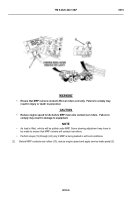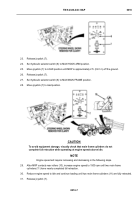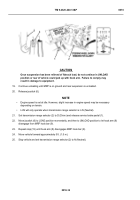TM-9-2320-440-13-P - Page 112 of 1616
TM 9-2320-440-13&P
0016-10
0016
b.
Unloading MRP in Manual Mode.
WARNING
•
Check for overhead power lines or other obstructions before attempting LHS
operation.
Failure to comply may result in injury or death to personnel.
•
Check ground conditions for firmness and that sideways inclination is no greater
than 5 degrees before loading or unloading an MRP.
Failure to comply may result
in injury or death to personnel.
•
During any load or unload cycle, all personnel must stay clear of LHS and MRP.
Failure to comply may result in injury or death to personnel.
•
When loaded with MRP, the center of gravity is moved up and toward rear of
vehicle. Extreme caution must be taken when turning and ascending or descending
on a grade. Failure to comply may result in injury or death to personnel.
•
Maximum side slope while operating a HEMTT THAAD loaded with an MRP is 20
percent.
Failure to comply may result in injury or death to personnel.
CAUTION
•
Before starting any LHS operations, clean all operating components of snow, ice,
sand, or mud.
Failure to comply may result in damage to equipment.
•
Before starting any LHS operations, adjust extension mirror to monitor LHS
operations.
Failure to comply may result in damage to equipment.
•
If terrain is deeply rutted, soft soil, etc., mud flaps must be pinned up before
beginning LHS operation. Failure to comply may result in damage to equipment.
•
The HEMTT THAAD LHS is only designed to load/unload MRP in AUTO mode.
Extreme caution must be used when operating LHS in MANUAL mode.
Failure to
comply may result in damage to equipment.
•
Outriggers must be stowed before loading or off-loading an MRP.
Failure to comply
may result in damage to equipment.
NOTE
•
Before loading or unloading an MRP, verify that MRP rack locks are fully retracted and
deck elevation cylinders are fully stowed.
If either of these criteria are not met, the
vehicle’s safety interlocks will not allow the LHS to operate.
-
-
-
-
-
-
-
-
-
-
-
-
-
-
-
-
-
-
-
-
-
-
-
-
-
-
-
-
-
-
-
-
-
-
-
-
-
-
-
-
-
-
-
-
-
-
-
-
-
-
-
-
-
-
Back to Top




















